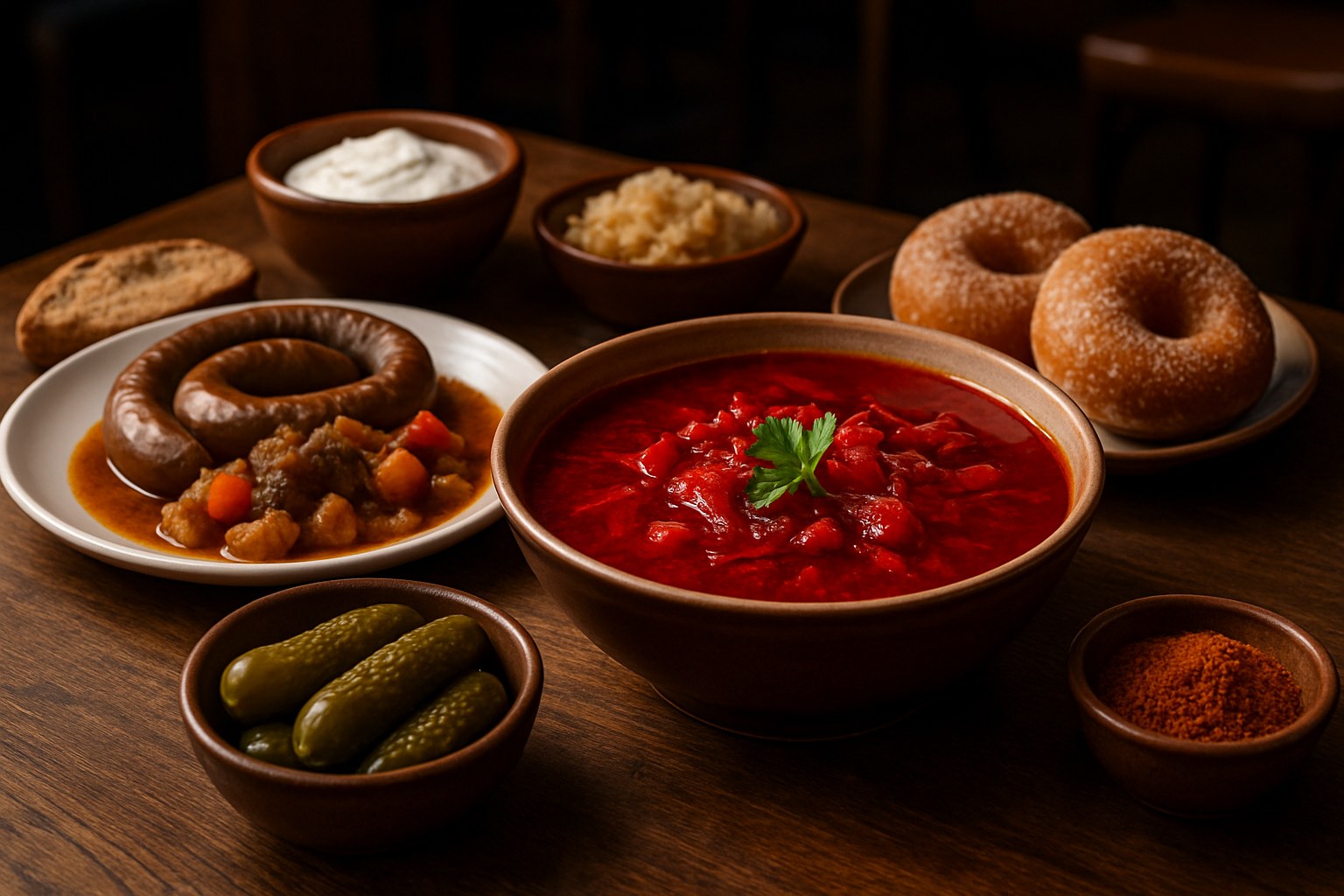An Immersion into the Delicacies of Eastern European Cuisine
Eastern European cuisine is a treasure trove of robust flavors and hearty dishes that are steeped in tradition. This gastronomic journey will allow you to explore the culinary diversity of this region that often gets overshadowed by its Western counterparts.

An Overview of Eastern European Cuisine
Eastern European cuisine is a vast landscape of food culture that spans across several countries. Each nation brings its unique flavor palette to the table, resulting in a culinary tapestry that is rich in variety and steeped in tradition. Whether it’s the comforting borscht from Ukraine, the savory sarma from Serbia, or the sweet and tangy pączki from Poland, there’s a dish to cater to every palate.
The Classics: A Look at Some Signature Eastern European Dishes
When it comes to Eastern European cuisine, certain dishes stand out for their comfort factor and rich flavors. Take, for example, the Hungarian goulash, a hearty stew made from meat and vegetables, seasoned with paprika and other spices. Or the Romanian mici, a type of grilled sausage that’s a favorite at barbecues. Each dish tells a story of its origin, giving you a taste of the region’s history and culture.
The Art of Preserving: Eastern Europe’s Love for Pickles
Pickling is a food preservation technique that is widely used in Eastern Europe. From cucumbers to cabbage and even watermelon, the art of pickling is deeply ingrained in the region’s culinary customs. The process not only extends the shelf life of the produce but also enhances their flavor, giving them a tangy and often spicy note that adds a kick to any dish they’re served with.
The Influence of Geography and Climate on Eastern European Cuisine
Eastern European cuisine is largely shaped by its geography and climate. The cold winters necessitate dishes that are hearty and warming, like soups and stews. Meanwhile, the fertile plains are ideal for growing a variety of grains, which form the basis of many Eastern European dishes. The proximity to the sea also influences the cuisine, with seafood being a staple in certain regions.
The Rising Popularity of Eastern European Cuisine Globally
In recent years, Eastern European cuisine has been gaining recognition on the global gastronomy scene. More and more restaurants are embracing these traditional dishes, introducing them to a wider audience. This rise in popularity is not only a testament to the deliciousness of these dishes but also an acknowledgement of the culinary heritage and diversity of Eastern Europe.
Did You Know?
-
The Polish dish bigos, also known as Hunter’s Stew, is often considered the country’s national dish. It’s a hearty stew made from a mix of fresh and smoked meats, sauerkraut, and mushrooms.
-
The Eastern European dessert known as pączki, a type of doughnut, is so popular in Poland that they celebrate a day known as “Pączki Day” every year.
-
The Romanian mici, literally translated as “small ones,” are actually quite large and are traditionally served with bread and mustard.
In conclusion, the culinary landscape of Eastern Europe is a celebration of tradition, diversity, and flavor. It’s a journey worth embarking on, one that promises to delight your taste buds and enrich your gastronomic knowledge. So, the next time you’re looking to try something new and exciting, why not venture into the deliciously diverse world of Eastern European cuisine?





